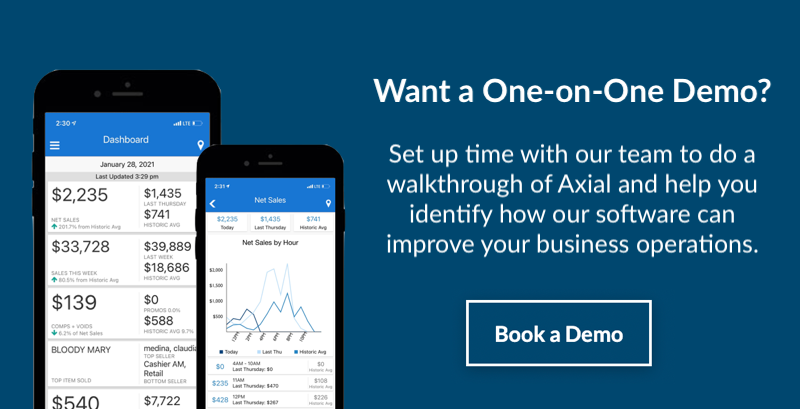Service staff drive the dining experience in restaurants. This is a fact.
We say this not to diminish the other factors that influence customer satisfaction. It’s just important for restaurant operators to acknowledge the crucial role of servers, cashiers, and bartenders so that they put the proper emphasis on coaching their performance.
In our decades of experience owning restaurants, we’ve tried just about everything to drive positive outcomes for service staff. Once we discovered an approach that works using software, we built it into Axial Commerce so that other restaurants could benefit from what we’ve learned.
Moving The Average Performance Forward
In any restaurant, there is a bell curve that represents how service staff perform in terms of sales, tips, etc. The over-performers and under-performers are on opposite sides of the curve, and most people are around the average.
The challenge for restaurant managers is: How do you lift the average performance? This is the biggest opportunity in growing sales.
Gamification is a method of applying typical elements of game playing – such as competition with others – to other areas of life in order to achieve specific outcomes, and it is VERY effective. To add gamification to Axial Commerce, we created leaderboards to show the average performance of service staff across these four categories – and we publicly show the names of the people who are out-performing the average:
- Total sales
- Sales per hour
- Credit card tip percentage
- Avg. check size
Service staff members who understand where the average is will naturally strive to be above the average. Collectively, if everyone aspires to perform above the average, the average performance will rise. Raising the average of the group delivers greater results than relying on individual superstar performers.
Encourage Performance By Praising In Public
The goal of these leaderboards is not to shame the under-performers. This is why we don’t show the below-average staff publicly in the app. If someone is below average, we show them where they stand privately, but the team doesn’t know if the person is in last place or just one spot below average. This avoids hurting morale and keeps them focused on getting above the index.
Emphasizing the average performance of the group is intentional. To motivate service staff to hit a goal, it needs to be reasonably attainable. It’s unrealistic to think a low-performing employee is going to become the leader in short order, but it is realistic for them to perform above the average.
This also ties into psychology. Most people want to know what the goal is and figure out how to hit that goal on their own versus having a manager breathing down their necks. Success is more rewarding when it’s self-motivated.
Leaderboards present objective data in a way that shows staff what the opportunity is. This creates an incentive that is much more positive than having an outside force pushing them.
It’s amazing to see how this simple concept can have a monumental impact on the dining experience in restaurants, as well as sales.
To start a free trial, to schedule a demo, or to learn more, register at https://app.axialcommerce.com/register or contact us by clicking here.





